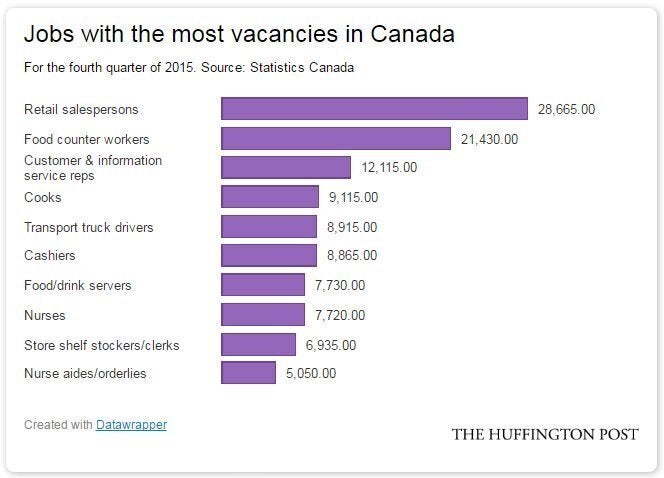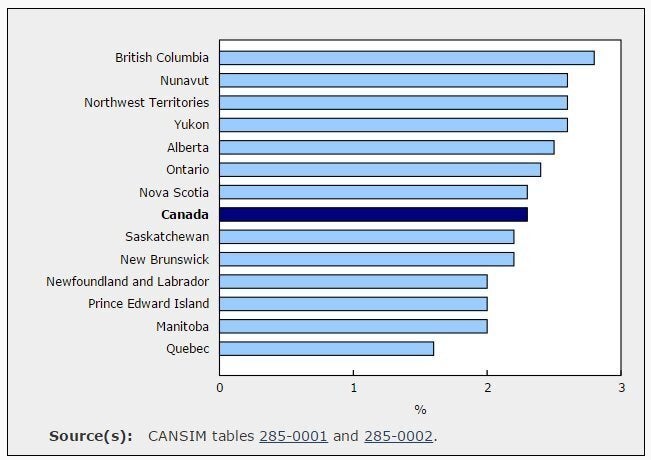Some industry insiders and economists have been raising the alarm about a shortage of skilled workers in Canada.
One case in point: A recent study predicted Canada would create 218,000 high-tech jobs between now and 2020, but would graduate only a fraction of the students needed to fill them.
But then you hear stories about Canadian engineering graduates needing a year to find a job, and you wonder, is a high-skilled labour shortage really the problem Canada is facing?
According to Statistics Canada’s latest survey of job vacancies, virtually all of the most in-demand jobs in Canada are low-paid positions.
Of the 353,000 job vacancies in Canada in the fourth quarter of 2015, more than 50,000 of them were for retail salespeople and food counter workers alone. One notable exception to the low-wage trend: Jobs related to nursing.

To some economists, these numbers suggest Canada’s skilled-worker shortage is a mirage. Jim Stanford, an economist at union Unifor, made that comment looking at data from an earlier StatsCan job vacancy report.
But this data might help to explain why retailers like Tim Hortons, Canadian Tire and Loblaws have snapped up temporary foreign workers in recent years.
The previous Conservative government tightened rules on the TFW program in its final few years in power, but many critics say that hasn't addressed key issues like creating a path to permanent residency for TFW workers.
The federal government is eyeing reforms to the TFW program, beginning with a review by a House committee that launched this week.

The StatsCan survey found the overall number of job vacancies in Canada fell from the third quarter to the fourth quarter of 2015, suggesting the job market got a little tougher.
The job vacancy rate was 2.3 per cent in the fourth quarter, meaning vacant jobs accounted for 2.3 per cent of all jobs. That was down from a rate of 2.6 per cent in the previous quarter. (StatsCan only launched this survey at the beginning of 2015, so it's not possible to make year-over-year comparisons.)
Despite the oil price crash, places in Alberta still have some of the highest job vacancy rates in the country.
Alberta’s Banff-Jasper-Rocky Mountain House economic region had the highest vacancy rate in the country, at 3.6 per cent, followed by two regions in British Columbia — Lower Mainland Southwest and Northeast — both with a 3-per-cent vacancy rate.
Also on HuffPost:
